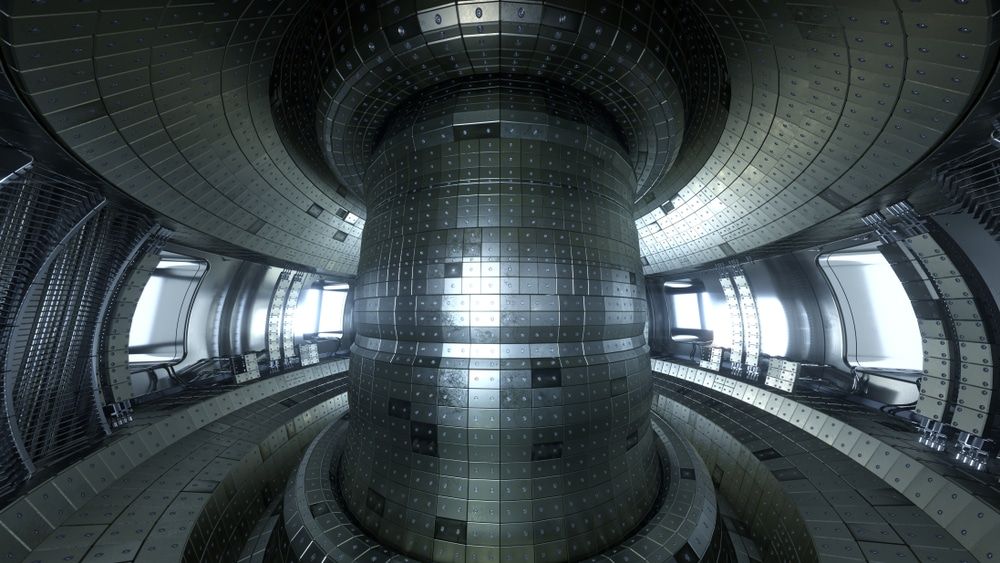Weighing 75 years of the nuclear age
By Elisabeth Eaves, Julian Hayda | December 1, 2017

Seventy-five years ago, a group of scientists gathered in a secret room under a stadium at the University of Chicago, where they conducted the experiment that launched the nuclear era. Led by Enrico Fermi, they caused the world’s first-ever nuclear chain reaction on December 2, 1942. A flurry of research and development ensued, and less than three years later, the United States dropped atomic bombs on Hiroshima and Nagasaki. In the 1950s, both the United States and the Soviet Union launched their first civilian nuclear power plants.
In an interview on Thursday with WBEZ’s Worldview, former Energy Secretary Ernest Moniz, a nuclear physicist and now chief executive of the Nuclear Threat Initiative, reflected on the legacy of that first experiment, for better and for worse.
No deliberate nuclear attack has taken place since the bombings of Japan, in part because of the sheer horror of those events. But the threat never goes away. “The risk of a nuclear weapon being used somewhere in the world in these next years is probably higher than it’s been since the Cuban missile crisis,” Moniz said. “We see concerns in North Korea, India-Pakistan. Russia of course remains, with a large arsenal, and we do not have a very constructive relationship right now with Russia.” North Korea launched a missile test just this week, the latest in a string of tests that have moved it steadily towards the goal of being able to hit the continental United States with a nuclear weapon.
Now, as head of the Nuclear Threat Initiative, Moniz thinks about how to “hold back and hopefully even roll back the spread of nuclear weapons.” One way to do that, he suggests, is to learn from and build on the nuclear agreement concluded between Iran and six world powers in 2015. That deal, generally regarded as effective though still controversial in some US and Iranian political circles, required Iran to curb its nuclear program in exchange for some sanctions relief. “How do we look at the provisions of that agreement, many of which break new grounds in verification, as an opportunity to more universally apply them to other countries?” Moniz asks.
If living with the threat of nuclear weapons has little upside, the evolution of nuclear energy is a more mixed blessing. It has yet to deliver on early proponents’ promise that it would be “too cheap to meter,” and disastrous accidents like the ones at Chernobyl in 1986 and Fukushima in 2011 have made it unpopular. The social and medical effects of nuclear-power accidents have been devastating, and the long-term health impacts remain under-researched. The public that lives near the Fukushima power plant say that they are socially stigmatized, and their medical needs aren’t being met, according to Norma Field, a Professor Emerita of Japanese Studies at the University of Chicago.
“The discourses of science and justice have combined to say that it’s safe for people to live [near Fukushima]” said Field on WBEZ’s Worldview. Field added that Japanese people who express hesitation around the persistence of nuclear energy invite discrimination because it goes against the scientific consensus.
On the other hand, nuclear power provides about 11 percent of the world’s electricity and doesn’t emit carbon dioxide, a key contributor to human-caused climate change. Nuclear power provides 19.7 percent of US electricity—but is responsible for 60 percent of US carbon-free electricity. “Nuclear certainly has a track record as advancing a low-carbon economy,” Moniz said. He is confident that we will see the electricity sector further decarbonize, but less certain of nuclear power’s role as that happens. “Nuclear has to be viewed in that context, as one of the options, along with wind and solar, other renewables, possibly even using coal with carbon capture and sequestration.”
Nuclear power has divided environmentalists in recent years, with some seeing it as an essential power source to combat climate change and others deeming the potential threat from accidents the greater risk. Some places, like Germany, are abandoning nuclear power altogether, motivated in no small part by Fukushima. Moniz doesn’t advocate such a retreat for the United States. Whenever a plant is shut down, he says, it puts a dent in America’s low-carbon options. “So I think it’s very important that we maintain the current fleet, at least through the end of their licenses,” he said.
But not everybody believes maintaining the current fleet of nuclear reactors—there are currently 99 in operation—is feasible. These skeptics include former nuclear engineer and whistleblower Arnie Gundersen, head of the nonprofit Fairewinds Energy Education and another guest on WBEZ’s Worldview.
“The average age of an American nuclear plant is about 36 years old and things wear out. They’re closing much faster than they’re being built” he said. “We only have two being built in America, and there are seven or eight in the hopper to close.”
Gundersen points out that every one of the power plants that closes also leaves radioactive waste, which remains toxic for thousands of years. Even more than controversy over the risks, though, the biggest obstacle to adoption of nuclear power in the United States has been cost, with enormous overruns leading to delays and closures.
For Gundersen, the economics of using nuclear energy to counter carbon emissions don’t check out. The World Nuclear Association estimates that it would take as many as 1,000 new nuclear power plants to reach climate goals laid out in the Paris Climate Agreement, but according to Gundersen, that would only reduce global CO2 emissions by 6.1 percent. Using data from Lazard Financial Advisory and Asset Management, Fairewinds calculated that it would cost $8.2 trillion to construct that many plants. “That same $8 trillion could go into renewables and reduce carbon by three or four times as much,” Gundersen said. “We’re just saying ‘nukes make carbon go away therefore we should support them’ and I think that’s wrong.”
The view that nuclear is simply too expensive to get right isn’t shared everywhere, though: Moniz pointed out that China is currently building about 30 new nuclear power plants. So while some see nuclear power as moribund in the United States, it’s too soon to write the epitaph for Fermi’s once-promising energy source.
Moniz will speak on December 1st at the University of Chicago at an event marking the 75th anniversary of the Fermi-led nuclear chain reaction. Gundersen and Field will speak at a Nuclear Information Energy Service event at DePaul University on December 2nd.
This article was a collaboration between the Bulletin of the Atomic Scientists and WBEZ’s Worldview.
Together, we make the world safer.
The Bulletin elevates expert voices above the noise. But as an independent nonprofit organization, our operations depend on the support of readers like you. Help us continue to deliver quality journalism that holds leaders accountable. Your support of our work at any level is important. In return, we promise our coverage will be understandable, influential, vigilant, solution-oriented, and fair-minded. Together we can make a difference.
Topics: Analysis, Nuclear Energy, Nuclear Weapons















